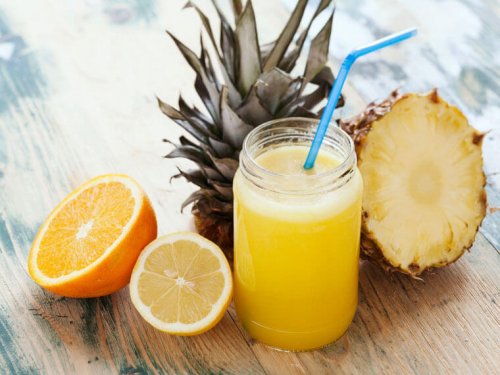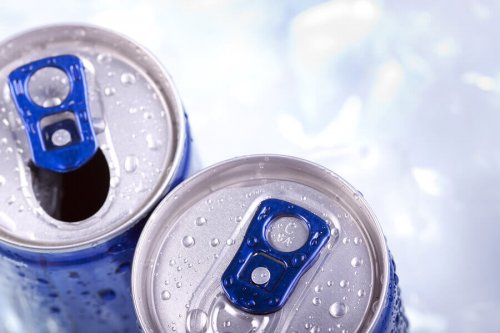Non-Alcoholic Drinks: Classifications

According to the Spanish Food Code, the non-alcoholic drinks category includes fruit juices, soft drinks, and “new” refreshing drinks. Today, we’ll share what the different non-alcoholic drink classifications mean and what kind of beverages fall into those categories.
Fruit juices
There are two methods of making juice: with a mechanical press or made with fruit concentrates diluted with water. Their color and flavor depend on the fruit they’re made with. These products are susceptible to fermentation.
Classification
Fresh fruit juice is the juice made from healthy, fresh, ripe, washed fruit in an authorized industrial process. You cannot dilute fresh fruit juices nor should they show any signs of fermentation.
Only the strained liquid is sold, or the liquid and the pulp. These juices do not contain the peel or the seeds. The pulp is finely strained.
The other category is fruit bases, whose long shelf-life is made possible by processes or preservatives. Consumers cannot eat fruit bases in their natural state. They are bases for other products.
Chemical composition
In general, fruit juice is made of 82-92 percent water, fruit, and other additional ingredients, which may include:
- Ascorbic acid as an antioxidant.
- Citric and malic acid.
- Sugar.
- Anti-foaming agent: only allowed in pineapple juice.
- Volatile compounds derived from the fruit to give the drink a nice aroma.
- Sulfur dioxide: a preservative that companies use in apple juice, citrus juices, and pineapple juice.
- Carbon dioxide.

Nutritional value
This changes a lot depending on the kind of fruit, the processing method, and how much manufacturing dilutes it. In general, juice can be a good source of nutrients because technological advances make it possible to preserve nearly all the nutrients. However, they still have fewer nutrients than fresh, whole fruit.
Fruit juices can be a good source of vitamins. They have a good amount of vitamin B but are very rich in vitamin C. How much vitamin C a particular fruit juice has depends on the composition of the soil where the fruit grew, where the pickers harvested it, the variety and ripeness of the fruit, and the processing and storing method.
In terms of mineral content, juices can be a good source of iron, copper, zinc, and manganese. Citrus juices, in particular, tend to be rich in potassium, calcium, magnesium, and phosphorus.
Soft drinks
The new health and nutrition laws in Spain, soft drinks include non-alcoholic drinks, carbonated or not, prepared with potable water, natural mineral water, or natural spring water that contain one or more of the following ingredients: carbon anhydride, sugar, juice, crushed or pureed fruits or vegetables, vegetable extracts, vitamins and minerals, aromas, authorized additives, or other food ingredients.
Another definition is undiluted or previously diluted liquids for sale meant for human consumption. This puts them in a category separate from water, fruit juices, milk and milk products, coffee, tea, etc. You can drink these beverages to quench your thirst, or just because they taste good.
Chemical composition
The goal of soft drinks is to quench thirst, although they usually have such a high sugar content that this seems impossible. They are usually 8-11 percent sugar and don’t contain many nutrients. They also tend to contain additives such as:
- Aromatic substances.
- Coloring, the law only allows these in cold, artificial carbonated drinks.
- Artificial flavors.
- Caffeine, to give the beverage a bitter and stimulating taste.
- Quinine – gives a bitter flavor to beverages made with extracts, and also tonic waters.
- Preservatives – the most common is benzoic acid.
- Acidulantes like phosphoric acid.
Nutritional value
These drinks have very little to offer in the way of nutrition. Usually, they’ll contain some amount of vitamin C, but in general, they are high-calorie drinks with very high levels of sugar. Most commercial brands have developed a line of “low-calorie” beverages that substitute sugar for artificial sweeteners.

Isotonic, hydrating, or sport drinks
These drinks are very effective for rehydration. They also have a high sodium content – usually in the form of sodium bicarbonate or sodium chloride – as well as sugar, glucose, and usually potassium or other minerals.
These components aid in water absorption and are very effective for intense, sweaty exercise. However, you shouldn’t drink them too often. Ask a health professional about how often is appropriate according to your lifestyle and health profile.
Energy drinks
These are non-alcoholic drinks, usually carbonated, made of caffeine and carbohydrates of different absorption rates. They also contain other ingredients such as amino acids, vitamins, minerals, vegetable extracts, and additives such as acidulants, preservatives, artificial flavoring, and artificial coloring. Companies designed them to give you extra energy when you have to make an extra physical or mental effort.
According to the Spanish Food Code, the non-alcoholic drinks category includes fruit juices, soft drinks, and “new” refreshing drinks. Today, we’ll share what the different non-alcoholic drink classifications mean and what kind of beverages fall into those categories.
Fruit juices
There are two methods of making juice: with a mechanical press or made with fruit concentrates diluted with water. Their color and flavor depend on the fruit they’re made with. These products are susceptible to fermentation.
Classification
Fresh fruit juice is the juice made from healthy, fresh, ripe, washed fruit in an authorized industrial process. You cannot dilute fresh fruit juices nor should they show any signs of fermentation.
Only the strained liquid is sold, or the liquid and the pulp. These juices do not contain the peel or the seeds. The pulp is finely strained.
The other category is fruit bases, whose long shelf-life is made possible by processes or preservatives. Consumers cannot eat fruit bases in their natural state. They are bases for other products.
Chemical composition
In general, fruit juice is made of 82-92 percent water, fruit, and other additional ingredients, which may include:
- Ascorbic acid as an antioxidant.
- Citric and malic acid.
- Sugar.
- Anti-foaming agent: only allowed in pineapple juice.
- Volatile compounds derived from the fruit to give the drink a nice aroma.
- Sulfur dioxide: a preservative that companies use in apple juice, citrus juices, and pineapple juice.
- Carbon dioxide.

Nutritional value
This changes a lot depending on the kind of fruit, the processing method, and how much manufacturing dilutes it. In general, juice can be a good source of nutrients because technological advances make it possible to preserve nearly all the nutrients. However, they still have fewer nutrients than fresh, whole fruit.
Fruit juices can be a good source of vitamins. They have a good amount of vitamin B but are very rich in vitamin C. How much vitamin C a particular fruit juice has depends on the composition of the soil where the fruit grew, where the pickers harvested it, the variety and ripeness of the fruit, and the processing and storing method.
In terms of mineral content, juices can be a good source of iron, copper, zinc, and manganese. Citrus juices, in particular, tend to be rich in potassium, calcium, magnesium, and phosphorus.
Soft drinks
The new health and nutrition laws in Spain, soft drinks include non-alcoholic drinks, carbonated or not, prepared with potable water, natural mineral water, or natural spring water that contain one or more of the following ingredients: carbon anhydride, sugar, juice, crushed or pureed fruits or vegetables, vegetable extracts, vitamins and minerals, aromas, authorized additives, or other food ingredients.
Another definition is undiluted or previously diluted liquids for sale meant for human consumption. This puts them in a category separate from water, fruit juices, milk and milk products, coffee, tea, etc. You can drink these beverages to quench your thirst, or just because they taste good.
Chemical composition
The goal of soft drinks is to quench thirst, although they usually have such a high sugar content that this seems impossible. They are usually 8-11 percent sugar and don’t contain many nutrients. They also tend to contain additives such as:
- Aromatic substances.
- Coloring, the law only allows these in cold, artificial carbonated drinks.
- Artificial flavors.
- Caffeine, to give the beverage a bitter and stimulating taste.
- Quinine – gives a bitter flavor to beverages made with extracts, and also tonic waters.
- Preservatives – the most common is benzoic acid.
- Acidulantes like phosphoric acid.
Nutritional value
These drinks have very little to offer in the way of nutrition. Usually, they’ll contain some amount of vitamin C, but in general, they are high-calorie drinks with very high levels of sugar. Most commercial brands have developed a line of “low-calorie” beverages that substitute sugar for artificial sweeteners.

Isotonic, hydrating, or sport drinks
These drinks are very effective for rehydration. They also have a high sodium content – usually in the form of sodium bicarbonate or sodium chloride – as well as sugar, glucose, and usually potassium or other minerals.
These components aid in water absorption and are very effective for intense, sweaty exercise. However, you shouldn’t drink them too often. Ask a health professional about how often is appropriate according to your lifestyle and health profile.
Energy drinks
These are non-alcoholic drinks, usually carbonated, made of caffeine and carbohydrates of different absorption rates. They also contain other ingredients such as amino acids, vitamins, minerals, vegetable extracts, and additives such as acidulants, preservatives, artificial flavoring, and artificial coloring. Companies designed them to give you extra energy when you have to make an extra physical or mental effort.
All cited sources were thoroughly reviewed by our team to ensure their quality, reliability, currency, and validity. The bibliography of this article was considered reliable and of academic or scientific accuracy.
- Alimentarius, C. (2013). Codex Alimentarius. Guidelines on Nutrition Labeling (CAC/GL 2-1985 (rev 1-1993)
This text is provided for informational purposes only and does not replace consultation with a professional. If in doubt, consult your specialist.








